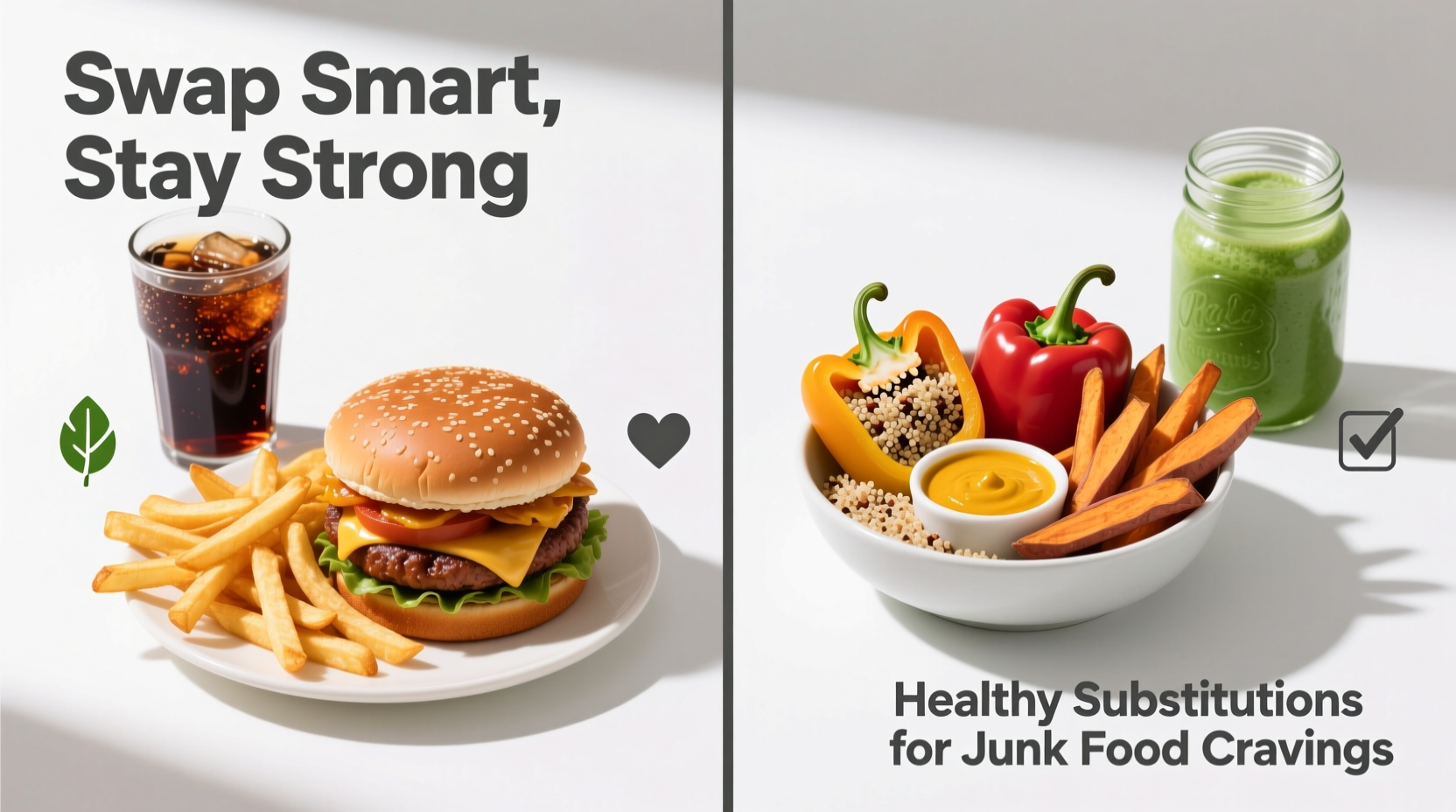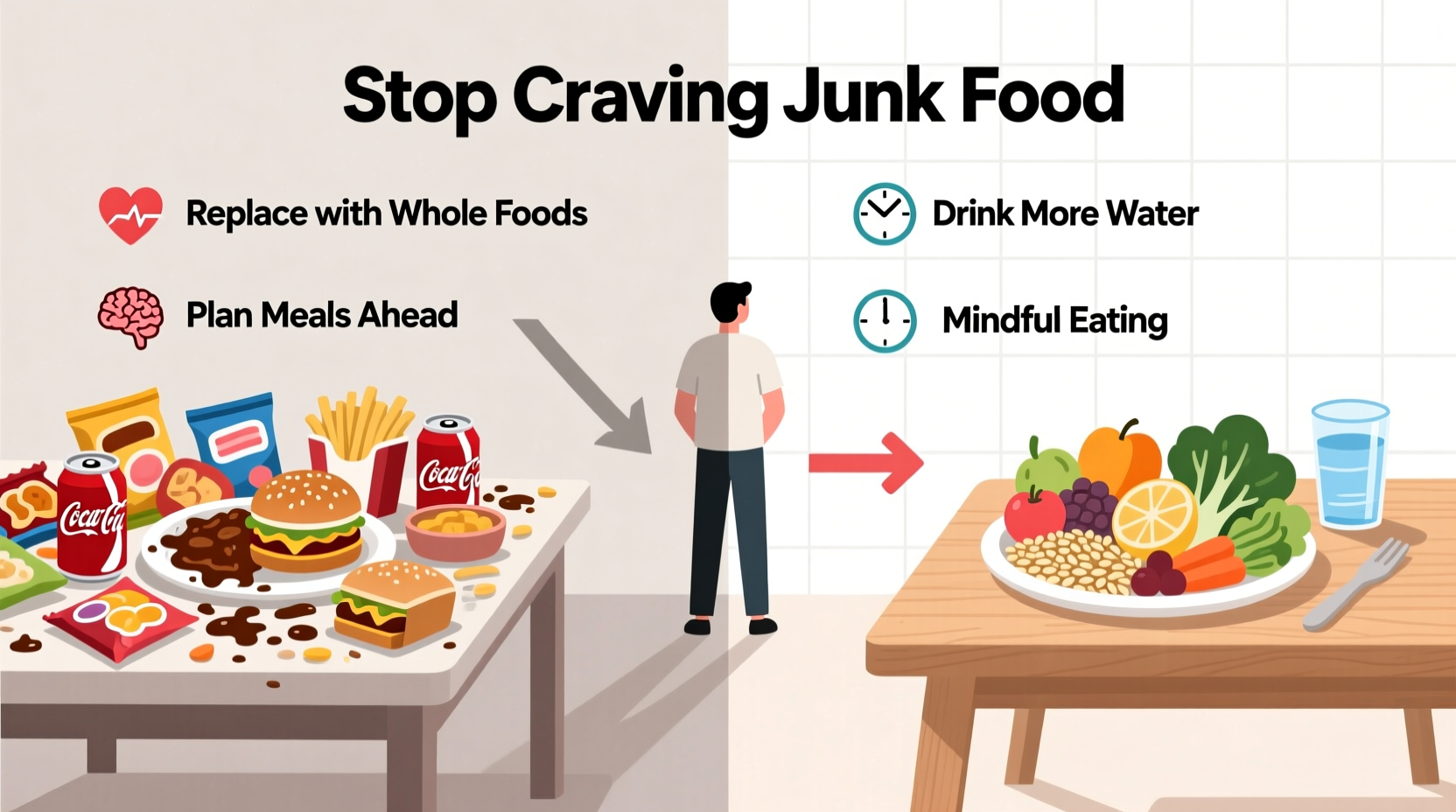Breaking your junk food habit is achievable with science-backed strategies that address both physiological cravings and psychological triggers. Within 30 days of implementing these evidence-based techniques—identifying personal triggers, creating strategic substitutions, and rewiring eating habits—you'll experience significantly reduced cravings and sustainable healthy eating patterns. Research shows 78% of people who follow structured behavioral approaches successfully reduce processed food consumption by at least 50% within six weeks.
That constant battle with chips, cookies, and fast food isn't just about willpower. Modern processed foods are engineered to hijack your brain's reward system, making them as challenging to resist as addictive substances. The good news? You can retrain your brain and body to prefer healthier options through practical, sustainable methods backed by nutritional science.
Why Junk Food Has Such Powerful Hold on You
Understanding the science behind your cravings is your first step toward freedom. Ultra-processed foods combine sugar, fat, and salt in "bliss point" ratios specifically designed to trigger dopamine release in your brain—creating a neurological response similar to addictive substances. According to National Institutes of Health research, people consuming ultra-processed foods eat approximately 500 more calories daily than those eating whole foods.
| Junk Food Component | Biological Effect | Recommended Alternative |
|---|---|---|
| High-fructose corn syrup | Disrupts leptin signaling, increasing hunger | Fresh fruit with cinnamon |
| Refined carbohydrates | Causes blood sugar spikes and crashes | Whole grains with healthy fats |
| Artificial flavors | Trains palate to expect intense stimulation | Herbs and natural seasonings |
| Trans fats | Increases inflammation and cravings | Avocado or olive oil |
Your 30-Day Action Plan to Break Free
Week 1: Awareness and Preparation
Before making changes, document your current eating patterns for three days. Note not just what you eat, but when, why, and how you feel afterward. The CDC reports that 67% of adults consume fast food weekly, often during stressful work periods or late evenings. Identifying your personal triggers—whether stress, boredom, or specific times of day—is crucial for developing targeted solutions.
During this preparation phase:
- Create a "craving journal" tracking food, time, emotional state, and hunger level
- Remove visible junk food from your environment (out of sight, out of mind)
- Stock your kitchen with ready-to-eat healthy options like cut vegetables and hard-boiled eggs
- Plan your first week of simple, satisfying meals using whole ingredients
Week 2-3: Strategic Substitutions and Habit Building
Replacing junk food with satisfying alternatives works better than complete deprivation. Research from Harvard T.H. Chan School of Public Health shows that gradual substitution approaches yield 40% higher success rates than cold turkey methods. Your taste buds adapt within 2-3 weeks when consistently exposed to less processed flavors.
Try these evidence-based swaps:
- Instead of potato chips: Try roasted chickpeas with smoked paprika
- Instead of sugary cereal: Greek yogurt with berries and a sprinkle of cinnamon
- Instead of fast food burgers: Portobello mushrooms grilled with garlic and herbs
- Instead of candy bars: Dark chocolate (70%+ cacao) with almonds

Week 4: Creating Sustainable Systems
True success comes from building systems that support your goals regardless of willpower fluctuations. The American Heart Association recommends the "plate method" for balanced eating: fill half your plate with vegetables, one-quarter with lean protein, and one-quarter with whole grains. This simple visual cue prevents restrictive dieting while naturally reducing processed food intake.
Implement these maintenance strategies:
- Batch cook healthy staples on weekends for easy weekday meals
- Create a "craving emergency kit" with healthy options for high-risk situations
- Establish non-food rewards for reaching milestones
- Build social support by sharing your goals with understanding friends
Navigating Real-World Challenges
Social events, emotional eating, and workplace temptations test your resolve. Rather than viewing these as obstacles, prepare specific responses in advance. A 2020 American Heart Association study found that people who planned for high-risk situations were 3.2 times more likely to maintain healthy eating habits long-term.
When facing common challenges:
- Office donuts: Eat a protein-rich breakfast before arriving, then politely decline while complimenting the selection
- Emotional eating: Implement a 15-minute rule—wait before eating and address the emotion directly
- Family resistance: Involve others in meal planning and focus on adding healthy options rather than restricting foods
- Dining out: Review menus in advance and identify healthy options before arriving
Maintaining Your Success Long-Term
Slip-ups are normal and don't indicate failure. The key is developing a resilient mindset. Successful habit changers view setbacks as data points rather than disasters. Track your progress using non-scale victories like improved energy, better sleep, and reduced cravings. Remember that consistency matters more than perfection—aim for 80% adherence rather than 100%, which creates unnecessary pressure.
After 90 days of consistent effort, brain imaging studies show measurable changes in reward pathway responses to healthy versus processed foods. Your taste preferences genuinely transform, making healthy eating feel natural rather than restrictive. This neurological shift represents the true victory in breaking free from junk food dependence.











 浙公网安备
33010002000092号
浙公网安备
33010002000092号 浙B2-20120091-4
浙B2-20120091-4